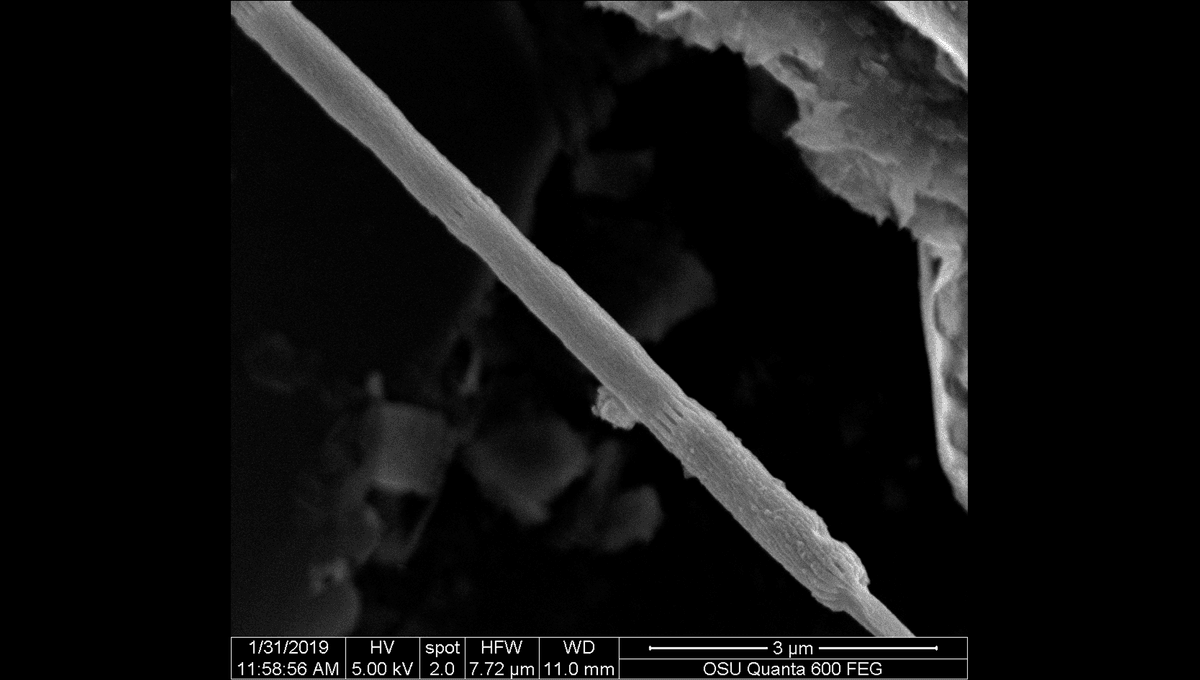
Researchers have discovered a brand-new species of electricity-conducting bacteria, and not only might it help them figure out more about how this unique branch of life evolved, but it could also set us on a new path in bioelectronics and environmental cleanup.
The new species was discovered from an intertidal mudflat in Yaquina Bay, Oregon, and has been named Candidatus Electrothrix yaqonensis in honor of the Yaqo’n people, whose ancestral lands encompassed Yaquina Bay and the connecting Yaquina River.
“Naming an ecologically important bacterium after a Tribe recognizes its historical bond with the land and acknowledges its enduring contributions to ecological knowledge and sustainability,” said Cheng Li, an author of the study describing the new species, in a statement.
Ca. Electrothrix yaqonensis’s name also provides a hint about its biology. It belongs to a group of bacteria known as cable bacteria, called as such because, well, they act like cables. This unique gaggle of long, multicellular, filamentous bacteria is packed with specialized conductive fibers, meaning that they can essentially act like electrical wiring.
Including the newly discovered one, there are 25 known species of cable bacteria – but despite the fact that they’re found throughout the globe in marine and freshwater sediments, we know very little about them, particularly when it comes to their morphology (their shape and structure) and their genetics.
The study investigating Ca. Electrothrix yaqonensis’s aims to fill some of those gaps – and it’s made some interesting discoveries.
Using genomic analysis, the study authors found that the new species contains something of a mix of the two genera of cable bacteria when it comes to the genes it possesses and the metabolic pathways those genes encode.
“This new species seems to be a bridge, an early branch within the Ca. Electrothrix clade, which suggests it could provide new insights into how these bacteria evolved and how they might function in different environments,” said Li.
This curious mix means that Ca. Electrothrix yaqonensis doesn’t really fit within the existing boundaries that scientists have presumed to apply to cable bacteria. “It stands out from all other described cable bacteria species in terms of its metabolic potential, and it has distinctive structural features, including pronounced surface ridges, up to three times wider than those seen in other species, that house highly conductive fibers made of unique, nickel-based molecules,” explained Li.
But standing out from the rest can be a good thing. Ca. Electrothrix yaqonensis’s unique fibers play an important role in nutrient cycling in the bacteria’s sedimentary habitat – something that humans might be able to exploit for good.
“These bacteria can transfer electrons to clean up pollutants, so they could be used to remove harmful substances from sediments,” said Li.
It could go beyond environmental cleanup, too. “Their design of a highly conductive nickel protein can possibly inspire new bioelectronics,” Li explained, with potential uses in food safety, industry, and medicine.
The study is published in Applied and Environmental Microbiology.
Source Link: Newly Discovered Electricity-Conducting Bacteria Could Inspire A New Wave Of Bioelectronics